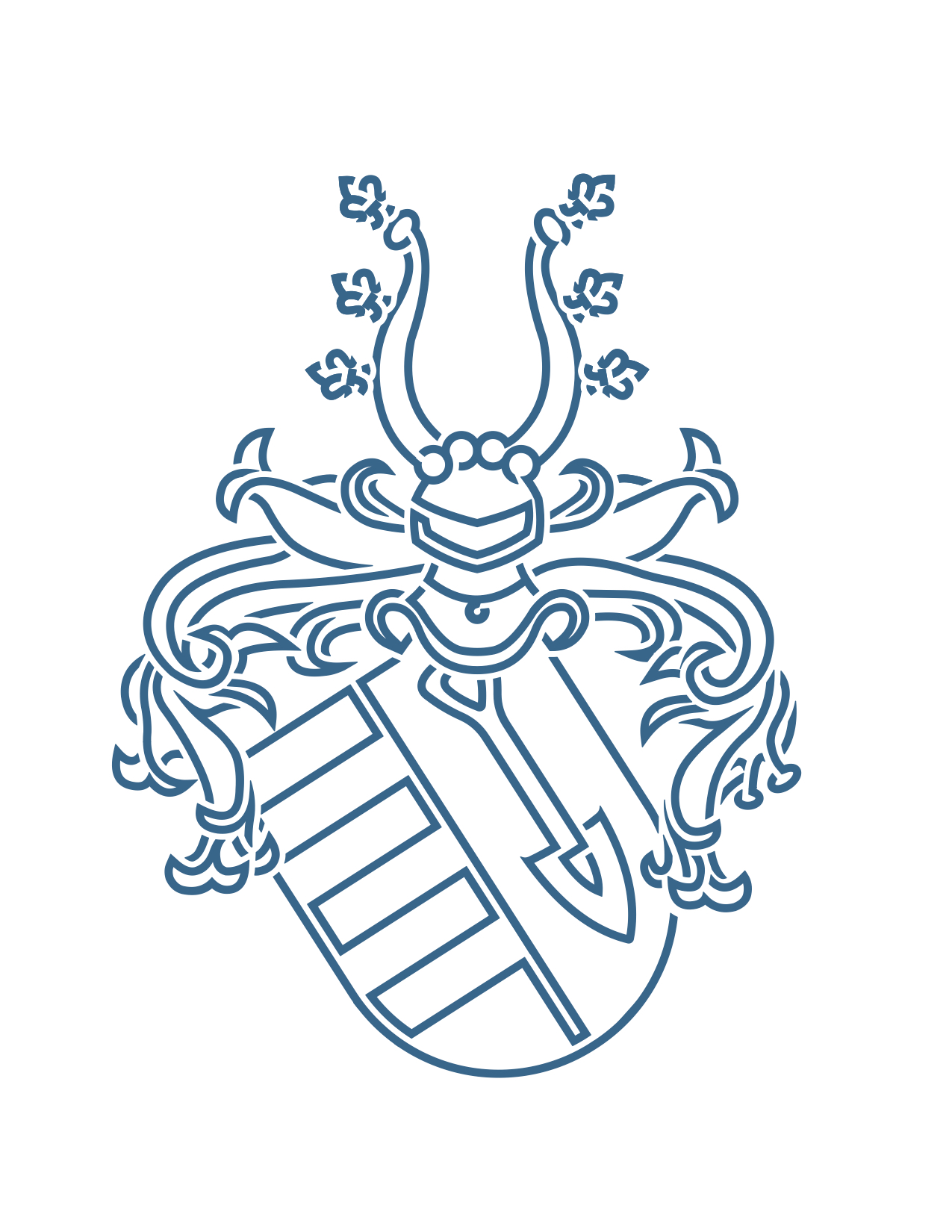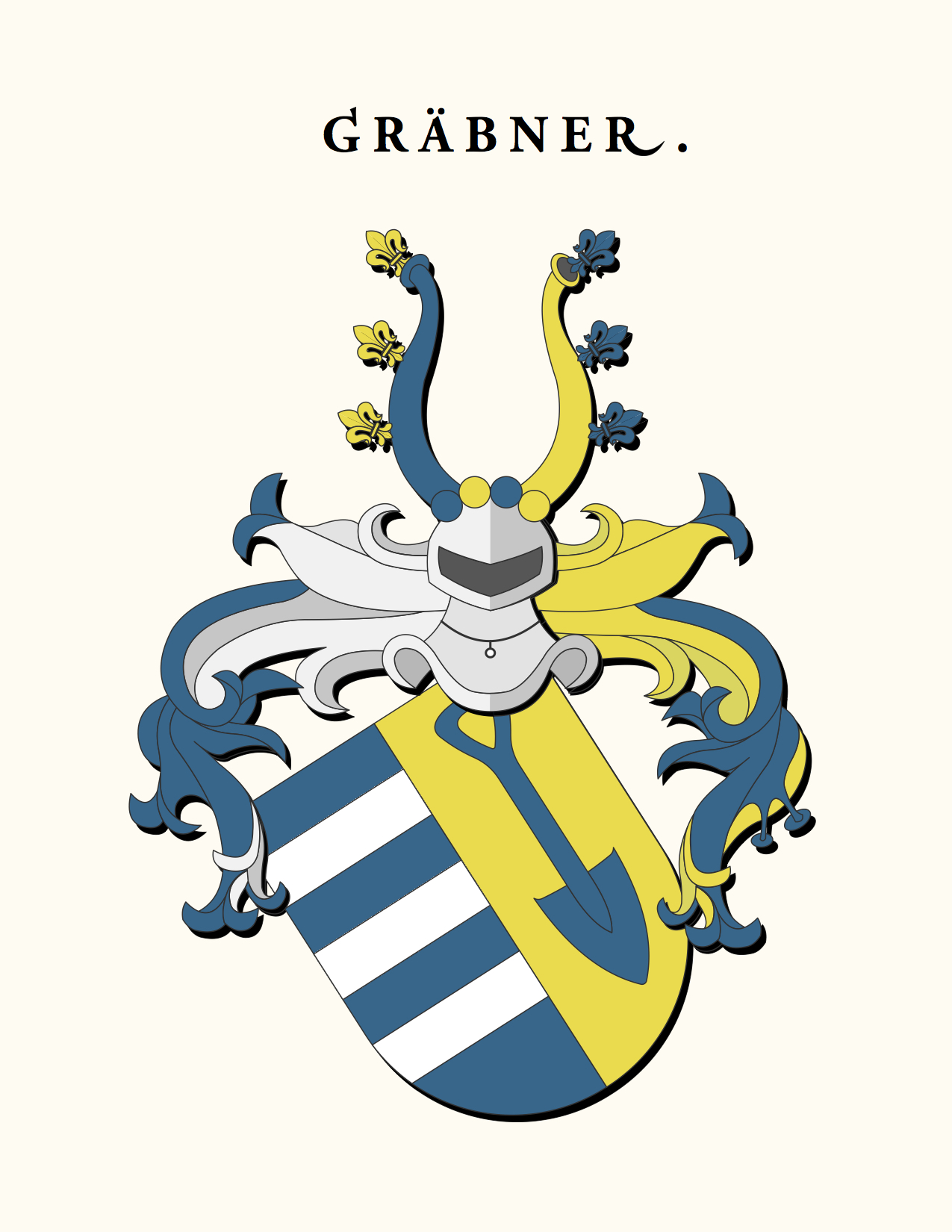Gräbner Family Coat of Arms
Simplicity, clarity, and confidence
The transformation of the Gräbner Family Coat of Arms
Coat of Arms are leftovers from medieval traditions and were used among the warrior class and thus became associated with nobility. Besides the insignias of royal families and territories, burgher arms appeared around the 1300’s as a means of families lineage identification. Today these insignias are no longer significant, yet they resemble a fascination with tradition and family origins. Burgher coat of arms often resemble the profession or specific origin of the armiger. In the case of the Gräbner name, it is believed that the name is associated with a creek or ditch (German: ‘Graben’) near which the family resided, or ‘to dig’ (German: ‘graben’).
The old burgher Gräbner or Graebner lineage originated in Austrian Silesia where in ancient times the Graber family played a significant role within the region’s feudal society. In the middle of the 18th century, one branch migrated to Prussian Posen and a second branch settled in the middle of the 19th century in the Hanseatic City of Lübeck.
The graphic exercise to modernize the Gräbner Family’s Coat of Arms became an exploration in the possibility to translate a traditional insignia into a contemporary graphic identity.
The central idea was to simplify the classic insignia, retaining its recognizable classic attributes, such as the canting coat of arms with its mantling, helmet, crown and crest of buffalo horns with triplets of fleurs-de-lys.
Although historically significant, the tincture of Azure (blue) and the metals Argent (silver) and Or (gold) were dropped in favor of a single, continuous and confident outline.


